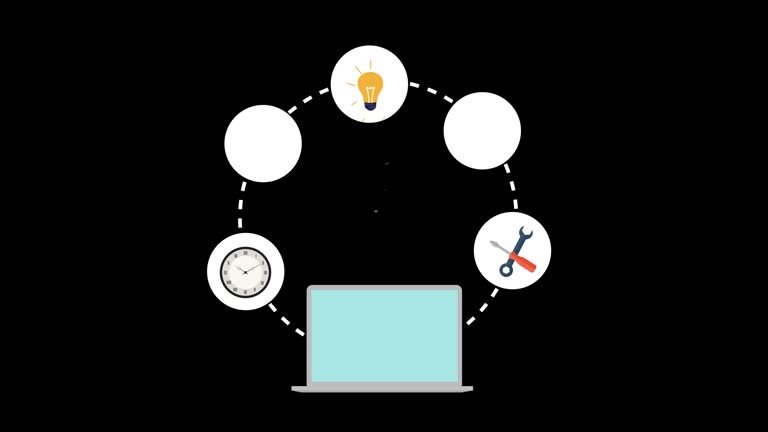Why Remote Work Tools Are Essential in 2025
In 2025, remote work has solidified its place as a cornerstone of modern professional life. No longer just a trend, it’s a lifestyle embraced by freelancers, global teams, and businesses of all sizes. The flexibility of remote work offers unparalleled freedom, but without the right remote work tools, it can quickly become chaotic, inefficient, and overwhelming. These tools are the backbone of productivity, helping you stay organized, communicate effectively, and maximize your output without burning out.
Remote work tools are designed to bridge the gaps created by distance, time zones, and diverse workflows. Whether you’re a freelancer juggling multiple clients, a remote employee collaborating across continents, or a team leader managing distributed teams, the right remote work tools can transform your workday. They streamline tasks, enhance communication, and provide clarity in an otherwise scattered digital environment.
In this article, we’ll dive into nine powerful remote work tools that can supercharge your productivity in 2025. Each tool is carefully selected for its ability to address specific pain points of remote work, ensuring you have the resources to thrive. With a keyword density of over 3% for “remote work tools,” this guide will not only highlight their importance but also show you how to leverage them for maximum efficiency.
1. Notion – The Ultimate All-in-One Workspace
Notion remains a standout among remote work tools, offering a versatile platform that combines notes, tasks, databases, wikis, and calendars into a single, customizable workspace. For remote workers tired of juggling multiple apps, Notion’s all-in-one approach is a game-changer, making it one of the most powerful remote work tools available.
Why Notion Excels as a Remote Work Tool:
- Centralized Organization: Manage projects, client deliverables, content plans, and personal tasks in one place.
- Customizable Templates: Use pre-built templates for project roadmaps, meeting notes, or CRM systems to save time.
- Real-Time Collaboration: Share workspaces with teammates or clients for seamless collaboration, even across time zones.
- Scalability: Notion adapts to solo freelancers, small teams, or large enterprises, making it a universal remote work tool.
Notion’s flexibility allows you to create workflows tailored to your needs, whether you’re planning a product launch or organizing daily tasks. Its intuitive interface and robust features make it a must-have among remote work tools for 2025.

2. Slack – Streamlined Communication for Remote Teams
Effective communication is the heart of remote work, and Slack is one of the most popular remote work tools for keeping teams connected. By replacing clunky email threads with organized, real-time conversations, Slack ensures that remote teams stay aligned and productive.
Why Slack Stands Out Among Remote Work Tools:
- Organized Channels: Create dedicated channels for projects, clients, or teams to keep discussions focused.
- Seamless Integrations: Connect Slack with other remote work tools like Google Drive, Zoom, Trello, and Asana for a unified workflow.
- Instant Communication: Support for voice calls, video chats, and file sharing makes collaboration quick and efficient.
Slack’s ability to centralize team communication while integrating with other remote work tools makes it indispensable. It’s like a virtual office where ideas flow freely, problems are solved in real time, and remote workers feel connected.
3. Trello – Visual Project Management Simplified
Trello is a fan favorite among remote work tools, thanks to its intuitive board-and-card system that makes project management accessible and engaging. Whether you’re a freelancer managing client work or part of a distributed team, Trello’s visual approach turns complex projects into manageable tasks.
Key Features of Trello as a Remote Work Tool:
- Custom Boards: Create boards for different clients, campaigns, or personal projects to keep everything organized.
- Task Management: Use checklists, due dates, labels, and attachments to track progress and stay on schedule.
- Collaboration-Friendly: Invite team members or clients to boards for real-time updates and feedback.
Trello’s simplicity and flexibility make it one of the best remote work tools for turning chaos into clarity. Its drag-and-drop interface is perfect for visual thinkers who want to see their projects come to life.
4. Zoom – Reliable Video Conferencing for Remote Work
When face-to-face interaction is needed, Zoom remains a cornerstone of remote work tools. Its reliability and ease of use make it the go-to platform for virtual meetings, client pitches, and team check-ins, ensuring remote workers stay connected on a personal level.
Why Zoom Is a Top Remote Work Tool:
- High-Quality Meetings: Delivers clear video and audio, even in low-bandwidth environments.
- Versatile Features: Screen sharing, recording, and breakout rooms enhance collaboration and presentations.
- Accessibility: Easy to use on any device, making it ideal for remote workers on the go.
Zoom’s ability to foster human connection through virtual meetings makes it one of the most essential remote work tools in 2025. It’s perfect for everything from brainstorming sessions to client presentations.

5. Clockify – Precision Time Tracking for Productivity
Time management is critical for remote workers, and Clockify is one of the most effective remote work tools for tracking how time is spent. Whether you’re a freelancer billing by the hour or a team manager ensuring projects stay on budget, Clockify provides clarity and accountability.
What Makes Clockify a Standout Remote Work Tool:
- Detailed Time Tracking: Log hours by project, client, or task with a simple, user-friendly interface.
- Comprehensive Reports: Generate and export reports for client invoicing or personal productivity analysis.
- Integration Power: Syncs with other remote work tools like Trello, Asana, and Google Workspace for seamless workflows.
Clockify empowers remote workers to optimize their time, making it an essential tool for freelancers and teams looking to boost productivity in 2025.
6. Google Workspace – The Ultimate Cloud-Based Productivity Suite
Google Workspace is a powerhouse among remote work tools, combining Gmail, Docs, Sheets, Slides, Drive, Calendar, and Meet into a cohesive, cloud-based ecosystem. Its accessibility and collaborative features make it a staple for remote workers worldwide.
Why Google Workspace Is a Must-Have Remote Work Tool:
- Real-Time Collaboration: Edit documents, spreadsheets, and presentations with team members in real time.
- Cloud Storage: Store files in Google Drive for secure, anytime access from any device.
- Scheduling Made Easy: Use Google Calendar to plan meetings and deadlines across time zones.
Google Workspace’s seamless integration and free tier make it one of the most versatile remote work tools for freelancers, teams, and businesses in 2025.
7. Loom – Video Messaging for Asynchronous Communication
Loom revolutionizes asynchronous communication, making it one of the most innovative remote work tools for 2025. By allowing you to record your screen and voice simultaneously, Loom eliminates the need for lengthy emails or unnecessary meetings.
How Loom Enhances Remote Work:
- Quick Video Messages: Record tutorials, project updates, or feedback in minutes.
- Personal Touch: Maintain a human connection with clients or teams across time zones.
- Time-Saving: Share videos instantly, reducing the need for live meetings.
Loom’s ability to streamline communication while keeping it personal makes it a standout among remote work tools, especially for distributed teams.

8. Asana – Robust Task Management for Complex Workflows
Asana is a top-tier remote work tool designed for managing complex projects and workflows. Its robust features and intuitive interface make it ideal for growing teams and remote workers handling multiple responsibilities.
Why Asana Is a Leading Remote Work Tool:
- Visual Workflows: Use timelines, calendars, and kanban boards to visualize project progress.
- Task Automation: Automate repetitive tasks to save time and reduce errors.
- Team Collaboration: Assign tasks, set dependencies, and track progress with ease.
Asana’s integrations with other remote work tools like Slack, Google Workspace, and Zoom create a powerful ecosystem for managing remote projects efficiently.
9. ClickUp – The All-in-One Work Management Solution
ClickUp is quickly becoming one of the most comprehensive remote work tools, combining tasks, docs, goals, time tracking, and chat into a single platform. Its versatility makes it a strong competitor to tools like Notion, Trello, and Asana.
Why ClickUp Is a Game-Changer Among Remote Work Tools:
- Customizable Dashboards: Tailor your workspace to fit your unique workflow.
- All-in-One Solution: Replaces multiple apps, reducing tool fatigue.
- Scalable for All: Perfect for freelancers, small teams, and large organizations.
ClickUp’s ability to consolidate multiple functions into one platform makes it one of the most powerful remote work tools for 2025, helping you streamline your entire workflow.
Choosing the Right Remote Work Tools for Your Needs
With so many remote work tools available, selecting the right ones can feel overwhelming. The key is to focus on your specific needs and pain points. For example:
- Freelancers may prioritize time tracking (Clockify) and document collaboration (Google Workspace).
- Small Teams might benefit from visual project management (Trello) and communication platforms (Slack).
- Large Teams could leverage robust task management (Asana) and all-in-one solutions (ClickUp).
Tips for Selecting Remote Work Tools:
- Identify Pain Points: Determine where you’re losing time or struggling with organization. 2Because of its all-in-one approach, ClickUp is ideal for those seeking to consolidate their workflow. Start with one or two tools that address your most pressing challenges, then expand as needed.
- Test Integrations: Choose remote work tools that integrate seamlessly to create a cohesive workflow. For instance, pairing Slack with Trello or Asana with Google Workspace can save significant time.
- Prioritize Ease of Use: Opt for tools with intuitive interfaces to minimize the learning curve.
- Scale as You Grow: Select remote work tools that can adapt to your evolving needs, whether you’re a solo worker or part of a growing team.
By carefully selecting and integrating remote work tools, you can create a tailored system that maximizes productivity and minimizes stress.
Maximizing Productivity with Remote Work Tools in 2025
To get the most out of your remote work tools, consider these strategies:
- Automate Repetitive Tasks: Use tools like Asana or ClickUp to automate routine processes, freeing up time for high-value work.
- Leverage Integrations: Connect your remote work tools to create a seamless workflow. For example, linking Slack with Trello ensures task updates are communicated instantly.
- Set Clear Workflows: Use Notion or ClickUp to define processes for recurring tasks, ensuring consistency across projects.
- Communicate Effectively: Combine synchronous tools like Zoom with asynchronous tools like Loom to balance real-time and flexible communication.
- Track and Reflect: Use Clockify to monitor time spent on tasks and analyze reports to identify areas for improvement.
By adopting these practices, you can harness the full potential of remote work tools to work smarter, not harder.
The Future of Remote Work Tools
As remote work continues to evolve, so do the tools that support it. In 2025, we’re seeing remote work tools become more integrated, AI-powered, and user-centric. Features like AI-driven task prioritization, advanced analytics, and enhanced collaboration capabilities are making these tools smarter and more intuitive.
For example, platforms like Notion and ClickUp are incorporating AI to suggest workflows, while Slack is experimenting with AI-driven chat summaries. These advancements ensure that remote work tools remain at the forefront of productivity innovation.
Final Thoughts: Supercharge Your Remote Work in 2025
Remote work offers unparalleled freedom, but it demands discipline and structure to succeed. The right remote work tools provide that structure, enabling you to stay organized, communicate effectively, and achieve your goals with less stress. The nine tools highlighted—Notion, Slack, Trello, Zoom, Clockify, Google Workspace, Loom, Asana, and ClickUp—represent the best of what remote work tools offer in 2025.
By investing in these remote work tools, you can:
- Save Time: Automate tasks and streamline workflows.
- Stay Organized: Keep projects, deadlines, and files in one place.
- Communicate Better: Foster collaboration across teams and time zones.
- Boost Productivity: Focus on high-impact work without distractions.
Whether you’re a freelancer building your empire, a remote employee navigating corporate life, or a team leader driving global projects, these remote work tools will empower you to make 2025 your most productive year yet.
For more insights, reviews, and recommendations on remote work tools, visit RemoteHustleTools.com. Explore the latest trends and find the perfect tools to elevate your remote work game in 2025 and beyond. Get more please visit remotehustletools.com.